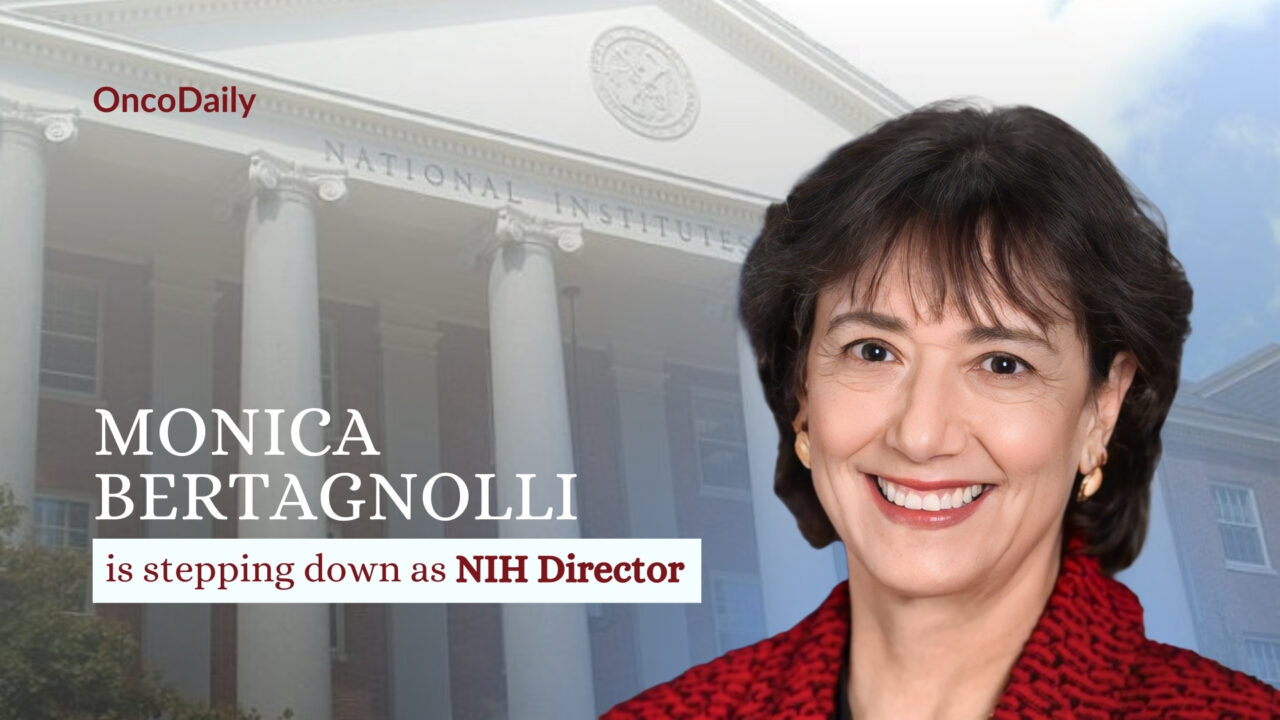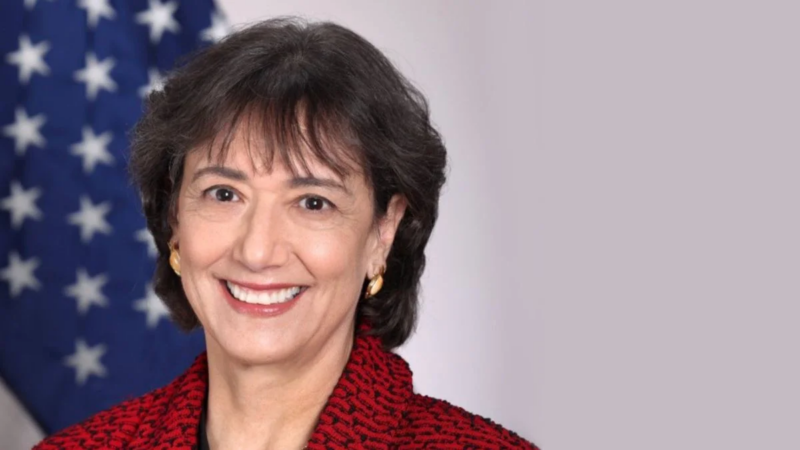
Monica Bertagnolli is ending her tenure as NIH director
Monica Bertagnolli has announced that she will step down as the Director of the NIH on January 17, 2025.
Monica Bertagnolli is the Director of the National Institutes of Health (NIH), USA until January 17, 2025. She is the President of Alliance for Clinical Trials In Oncology Foundation. She previously served as the Richard E. Wilson Professor of Surgery in the field of surgical oncology at Harvard Medical School, a surgeon at Brigham and Women’s Hospital, and a member of the Gastrointestinal Cancer Treatment and Sarcoma Centers at Dana-Farber Cancer Institute. Dr. Bertagnolli is the Founding Chair of the minimal Common Oncology Data Elements (mCODE) executive committee and has held multiple positions nationally, including being Past President and Chair of the Board of Directors of the American Society of Clinical Oncology. In 2021, she was elected to the National Academy of Medicine, having previously served on the National Academies National Cancer Policy Forum.

Read the Statement from Monica M. Bertagnolli, M.D., on ending her tenure as NIH director below:
“I am announcing today that I will step down on Jan. 17, 2025, as the 17th director of the National Institutes of Health (NIH). It has been my highest honor to lead this great agency since taking office on Nov. 9, 2023. The next NIH director will be leading an incredible agency with a rich 138-year history of scientific discovery that has improved health, revolutionized science and served society. These advances have been achieved because of a talented NIH workforce with a strong commitment to solving some of the most complex scientific and health challenges facing the world today. NIH also has a strong leadership team. I work closely with the directors of the NIH component organizations and together we identify programs that integrate research across the agency for a wholistic approach to research.
I am so proud of what NIH has been able to achieve in such a short time under my leadership. I’ve had the privilege of visiting many communities across the country who have poorer health outcomes and whose people will benefit from participation in biomedical research. I met with members of Congress on both sides of the aisle, toured academic medical centers, heard from community and Tribal leaders, explored community health centers, listened to patient advocates and learned from scientists and researchers. These visits sharpened my awareness that no two communities are exactly alike. People in rural areas face different challenges than those in large cities. A one-size-fits-all solution to improving poor health will not work across the United States. Rather, we need consistent and purposeful community engagement to address the unique needs of each community. We need to ask less of patients and instead meet people where they already receive care to engage them as our research partners. Building on these guiding principles, less than one year after I became NIH Director, we initiated a new primary care clinical research network pilot program called Communities Advancing Research Equity for Health or CARE for Health to connect innovative research with routine clinical care in real-world settings.
Aligned with this effort has been my vision to create an NIH health data ecosystem which employs a data model of collect once, use many times to reduce providers’ burdens and increase data sharing to improve health. This requires a re-envisioning of NIH’s National Library of Medicine to dramatically increase its capacity for data hosting, reaching beyond NIH to incorporate data from across the clinical care environment and from agencies across the Department of Health and Human Services to increase value for users. This new ecosystem employs a federated architecture to allow independent research teams to deliver data in ways that reduce complexity, require minimal cost to access and foster flexibility and agility in data exchange using open-industry data standards. NLM programs will support broad access to advanced analytics and computational power and provide the infrastructure required to obtain inclusive, diverse and secure data from clinical care environments.
I also was proud to have worked with the Biden Administration on the White House Initiative on Women’s Health Research.(link is external) As part of this effort, NIH committed $200 million in fiscal year 2025 toward research awards addressing cross-cutting women’s health needs, particularly at the health inflection points of menarche, pregnancy and menopause. As a survivor of breast cancer, I am one of the many women who has benefitted from significant medical breakthroughs over the past 60 years made possible by NIH. However, we still have many gaps in knowledge regarding the many interconnected factors that contribute to health and disease across a woman’s lifetime. NIH’s research on women’s health continues to be strengthened to address those gaps.
Recent events have brought far greater understanding of the threats that we all face from infectious agents. The COVID-19 pandemic has brought great suffering to the world, and even after recovery from an acute infection too many people experience prolonged harm. To further bolster research efforts to find treatments for long COVID, NIH launched a new component of the Researching COVID to Enhance Recovery (RECOVER) initiative(link is external) called RECOVER-Treating Long COVID (RECOVER-TLC). We convened a workshop to hear from more than 1,400 patients, advocates, health care providers and scientists to help inform this next phase of long COVID clinical trials. These trials will also be informed by extensive data from 40 pathobiology studies, review of 60 million electronic health records, and eight existing phase 2 clinical trials testing the safety and efficacy of 13 treatments that include drugs, biologics, medical devices and other therapies.
So, while I leave NIH unable to see these initiatives and more through to fruition, I am optimistic that they will continue under new leadership. I know the new administration shares my desire to improve U.S. life expectancy which is the primary focus for CARE for Health and other NIH initiatives. I am profoundly grateful for the opportunity to serve at NIH and am confident that the people of this amazing agency will help the next NIH director succeed in driving a research agenda to improve the health of all Americans.”
-
Challenging the Status Quo in Colorectal Cancer 2024
December 6-8, 2024
-
ESMO 2024 Congress
September 13-17, 2024
-
ASCO Annual Meeting
May 30 - June 4, 2024
-
Yvonne Award 2024
May 31, 2024
-
OncoThon 2024, Online
Feb. 15, 2024
-
Global Summit on War & Cancer 2023, Online
Dec. 14-16, 2023
